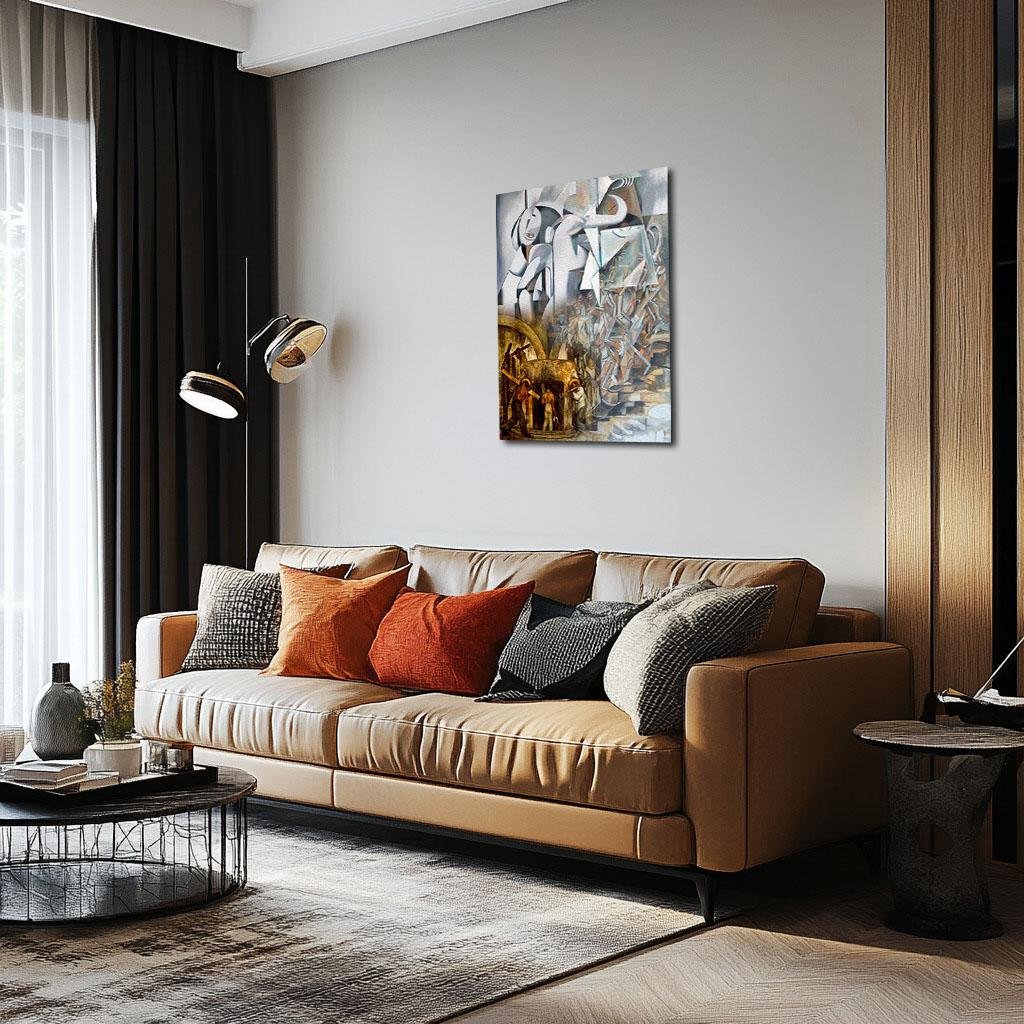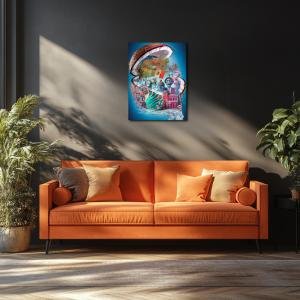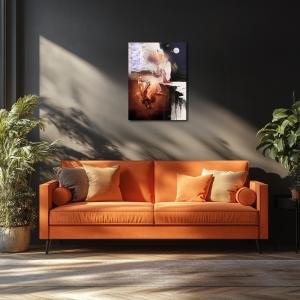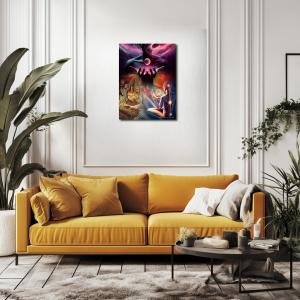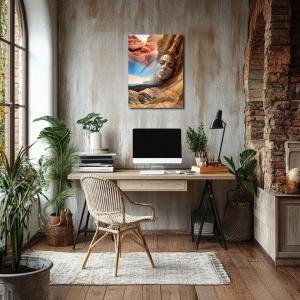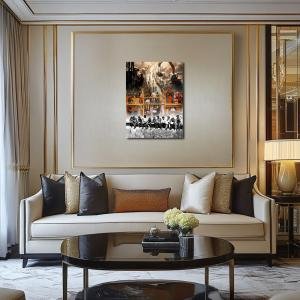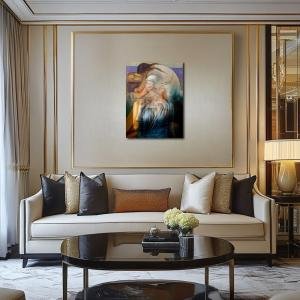Furnace and Form: A Descent into the Industrial Soul
Furnace and Form reimagines Diego Rivera’s Entrance to the Mine as a cubist-industrial meditation on labor, identity, and abstraction. Miners descend into a furnace-like tunnel, their grounded realism dissolving upward into shards of geometry and mechanical symbolism. Earthen browns transition into steel grays and abstract whites, reflecting the transformation from human labor to industrial systems. The piece explores how work both defines and dissolves the individual, inviting the viewer into a fractured, rhythmic descent where toil becomes both burden and blueprint.
Please see Below for Details…
Hotline Order:
Mon - Fri: 07AM - 06PM
404-872-4663
In Furnace and Form , the iconic industrial rhythm of Diego Rivera’s Entrance to the Mine is reinterpreted through a fractured lens of cubism and conceptual abstraction. This piece reshapes Rivera’s grounded vision of collective labor into a complex psychological excavation, where the literal mine becomes both a place and a mind—a dark, vital organ within the larger body of civilization. The descent here is not just physical but spiritual; each step underground becomes a journey into the layers of human effort, identity, and fragmentation.
At the heart of the composition lies Rivera’s familiar imagery: shirtless men with tools, backs taut with labor, descending into the stone maw of the mine. But rather than being isolated in realism, these figures are partially enveloped in a rising storm of geometries and dissected silhouettes. The architectural solidity of Rivera’s forms gives way to visual decomposition, mimicking the collapse of the mine’s solidity into a conceptual grid of thought and structure. This transformation is intentional—it bridges Rivera’s celebration of the working class with a modern interrogation of how labor is internalized, mechanized, and ultimately abstracted.
Above and beside the workers, a fractured anatomy of industry emerges—resembling both machine and mural, both body and blueprint. The industrial environment isn’t just depicted, it’s deconstructed. Spirals, shards, angular faces, and oblique machinery fill the upper register. These aren’t objects; they are visual echoes of the laborers’ movements, a ghost of automation intruding upon human rhythm. The composition plays with duplication and collapse—mining not only ore, but memory, myth, and meaning.
Color becomes the guiding soul in this descent. The lower half—anchored by Rivera’s original palette—is saturated in burnt umber, deep clay, and miner’s rust. These colors breathe with grit and history. They reflect the heat of furnace fires and the density of compressed stone. The tones of brown and ochre are not just earthy; they are weighted. They carry centuries of soot, blood, and toil. Every brush of reddish brown is a nod to the tactile: dirt beneath fingernails, sweat-stained sleeves, coal-streaked walls.
As the composition ascends and abstracts, the colors shift into a palette of mineral grays, steel blues, and industrial whites. This gradient represents the transformation of the human into the mechanical—where man merges with gear, breath becomes piston, and motion is converted into diagram. The white here is not purity; it’s opacity. It veils detail, blurs edges, suggesting how modern systems erase the individual even as they rely upon them.
There is a stark juxtaposition in how figures are rendered. Rivera’s miners below are muscular, textured, and heavy. Their realism anchors the piece. But above them, the cubist forms are fragmented, barely discernible—faceless and interchangeable. This tension is deliberate. I wanted to highlight the loss of identity that occurs when labor becomes mechanized. In the mine, men are seen. In the machine, they vanish. The interplay of clear form and abstract repetition mirrors the historical arc of industrialization: from communal task to bureaucratic routine.
The geometry in this piece is not just aesthetic—it’s a language. Arcs mimic the curve of tunnels, diagonals slice like picks into rock, and spirals evoke the endless rotations of mining wheels. These forms aren’t superimposed—they are excavated from Rivera’s foundation. I wanted the visual rhythm to feel mined itself, as if the abstract forms were carved from the very mural’s stone. Each fragment is a shard of thought, a fractured echo of purpose.
When I created Furnace and Form , I meditated on what it means to descend—not just into a mine, but into a system. I imagined labor not only as effort, but as erasure: the deeper you go, the less of yourself remains visible. And yet, there is resilience. Even in abstraction, the presence of the worker persists. Rivera’s ethos does not disappear—it adapts. It reshapes itself into new visual languages, but its heart remains.
Add your review
Your email address will not be published. Required fields are marked *
Please login to write review!
Looks like there are no reviews yet.

